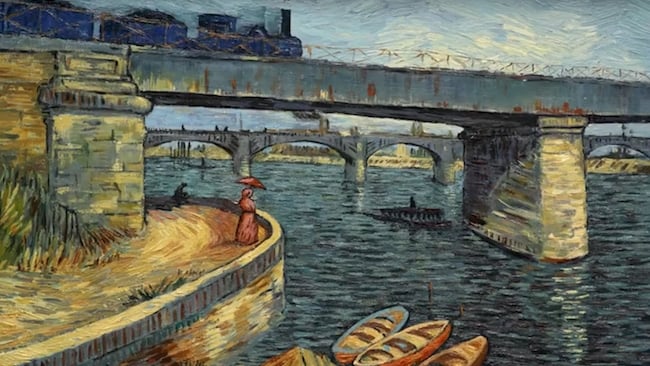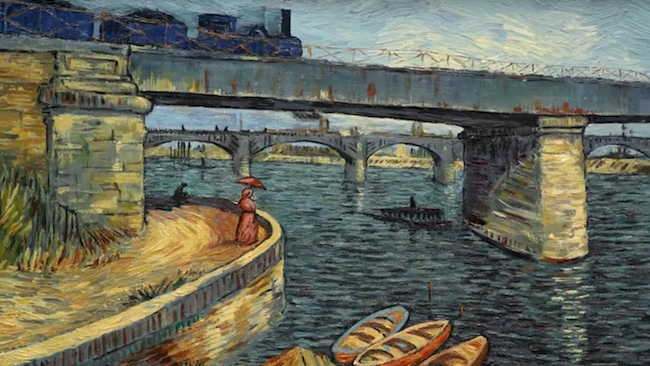
 IA still doesn't;t really do this animated frame from the film justice...
IA still doesn't;t really do this animated frame from the film justice...
65,000 frames, all of which have been hand-painted on canvas and then assembled into a film. Unsurprisingly, Loving Vincent is very much the first feature of its kind.
Written and directed by Dorota Kobiela and Hugh Welchman, and produced by Oscar-winning Polish production company BreakThru Films, Loving Vincent is a biopic about the artist Vincent Van Gogh’s final days. Set in 1890, the story is told entirely through his characters and landscapes, using 120 of Van Gogh’s famous works as key frames or points of entry into the story, the reimagined subjects of the paintings relating the Dutch Master's passionate life and mysterious death.
Loving Vincent fact #1: cinematographer Łukasz Żal was also the Oscar-nominated DoP on the stunning Ida.
There’s no doubt from the teaser trailer that Loving Vincent will be visually stunning. I’m looking forward to seeing the finished piece, but know that the geek in me (and you) can’t help but sneak a look under the hood. In the interest of serving our dear readers, we investigated how the team at BreakThru Films developed the production techniques to bring this animation/live action hybrid to the screen.
The actors are filmed against a green screen, the photographed action is then turned into black outlines that are projected onto the canvas inside the purpose-built Painting Animation Workstation. Here the artists use Van Gogh paintings as a reference to fill out the rest of the frame. The finished frames are then photographed and used to create a 12fps high-resolution sequence ready for the stringent QC process, with the final sequences going through editorial/grade and finishing. It’s cell-frame animation on steroids; I just hope the finished film doesn’t have the look of a drag-and-drop Photoshop filter.
Remarkably, it took 125 artists fluent in Van Gogh’s style and 1300 litres of oil paint to complete the 65,000 hand painted frames. The artists were recruited from around the globe. British Painter Sarah Wimperis was the only UK-artist chosen to relocate to Gdańsk and animate the well-known impasto swirls and twists into a vortex of moving frames.
Loving Vincent fact #2: 5000 artists applied to work on Loving Vincent. Selected painters had to successfully complete an 180-hour training programme to start work.
The idea of hand-painting individual frames to create a narrative story isn’t new. But the fact that reproducing one camera move alone took three months to complete is a reminder of the time investment required on a project like Loving Vincent. The undertaking alone is enough to short circuit most ambitions, but usually what will do it is the answer to the question: ‘What does this technique add to the story?’ Here, Van Gogh’s style is so distinct and so integral to the narrative it can actually carry the concept.
For a schooled Art type like me, this enterprise throws up some questions. I’ll be interested to see how Kobiela and Welchman tackle the problematic notion of the artist as genius. Will they challenge the re-brand of the cult of Van Gogh? As a historical figure, he is lazily presented as a hero, the very epitome of the romanticised authentic, struggling, expressive artist (he had neither patronage nor wide peer support in his lifetime). Will we discover something new about Van Gogh’s life? And does that even matter, as the artist here isn’t Van Gogh or the 120 painters churning out the frames, but the director Dorota Kobiela. It’s her job to deliver the emergent X factor, the gestalt of the subject matter and the mixed media delivery.
You can find out about local screenings by signing up to the newsletter. The five-year labour of love is due for release this year. Trailer below:
Tags: Production


Comments